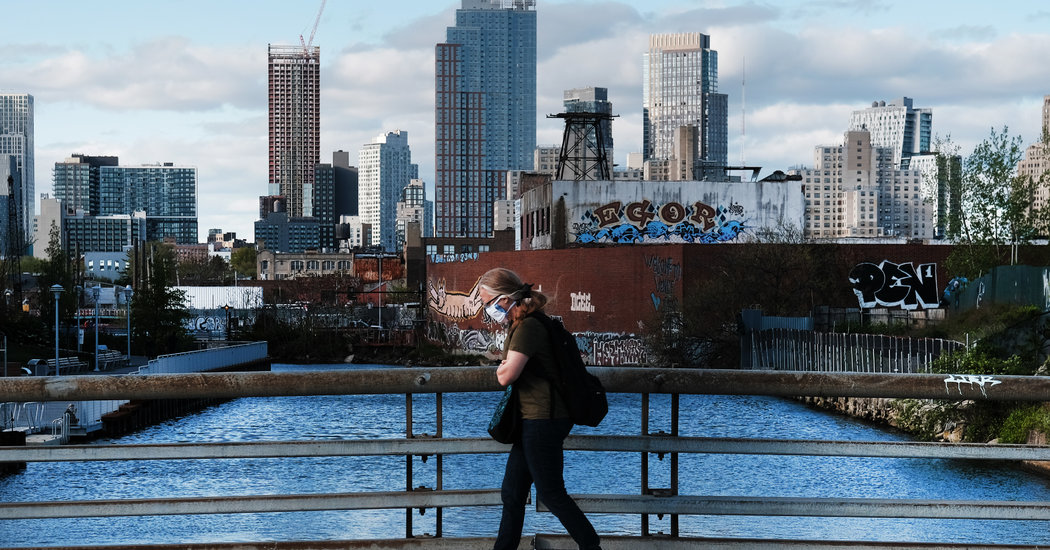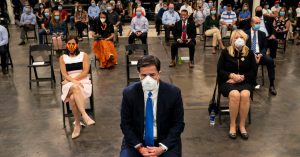Much is uncertain about New York City’s future amid coronavirus — the timeline for reopening, the timeline for development of treatments and a vaccine. But one thing has remained clear: In order to safely reopen, cities like New York must develop the capacity to regularly test portions of the population, trace the spread of the virus and isolate those who have been exposed. And as the count of those struggling both in health and finances continues to mount, time is of the essence. New York needs contact tracing quickly.
By now, multiple localities have proved the importance of contact tracing in an effective Covid-19 response. South Korea and Hong Kong have used it to contain their outbreaks, and Massachusetts last month became the first American state to invest in a contact-tracing program, budgeting $44 million to hire 1,000 people who can identify pockets of infection and prevent infected people from transmitting the virus to others in their community.
New York City is well positioned to undertake an ambitious program of this nature: The city’s health department has led contact-tracing efforts for decades for diseases such as tuberculosis, H.I.V. and Ebola. It regularly oversees similar efforts to contain outbreaks of sexually transmitted diseases, tuberculosis and other communicable diseases.
But instead of turning the authority over to the New York City Department of Health and Mental Hygiene, to retrace its well-trod territory, Mayor Bill de Blasio determined a pivot was in order. He decided to entrust the program to the public hospital system, Health and Hospitals, which oversees the city’s 11 public hospitals.
Mr. de Blasio, discussing the decision at a briefing on Friday, said the hospital system has so far overseen coronavirus testing and response with “speed and intensity and precision.” Dr. Mitchell Katz, the agency’s head, said the decision was made because Health and Hospitals is a public benefit corporation that can hire tracers and enter into contracts for testing more rapidly than a city department. Dr. Katz said the hospitals planned to hire 2,500 tracers who would be supervised collaboratively with the Health Department.
But there’s sure to be time and precision lost, too, in turning the program over into new hands in the middle of a public health crisis. The health department is typically able to do expedited hiring for such programs by working through a nonprofit intermediary, the Fund for Public Health in New York City.
“It makes absolutely no sense to move a function that has been done well by a great health department for decades to an organization that does not have the legal, epidemiologic, administrative or technical experience to manage it,” said Dr. Tom Frieden, a former city health commissioner and former director of the Centers for Disease Control and Prevention.
Starting a proper contact-tracing program goes far beyond the work of medical personnel. Vital records offices will be involved in analyzing death certificates; legal offices will be involved in enforcing orders for those who are at risk of spreading the virus but refusing to isolate. While the city’s health department has an infrastructure for issuing such orders, Health and Hospitals will have to create new protocols.
“It’s creating another bureaucracy where there doesn’t have to be one,” said Wilfredo Lopez, former general counsel at the health department.
A contact-tracing program is likely to present particular complications when used in settings like jails, prisons, homeless shelters and nursing homes, where the outbreaks of the virus have been highly concentrated and difficult to contain. The health department has years of experience training tracers to enter those environments without risking their own infection; Health and Hospitals will again have to scramble to catch up.
The mayor’s decision to break from precedent in contact tracing raised alarm bells among city officials. The City Council speaker, Corey Johnson, said the council would hold a hearing on the issue. “This is a distraction when we need to be focused on battling this virus,” Mr. Johnson wrote in a tweet on Friday.
Mr. de Blasio’s decision marks another chapter in his weeks of feuding with the city’s health department, after he dismissed early calls from the department’s commissioner to close city schools and businesses. To let politics determine public health decisions, and gamble on new systems instead of well-tested ones, is a miscalculation, one that could cost the city precious time in continuing to roll out its Covid-19 response.
“If you transfer these core responsibilities, it feels political,” Mr. Johnson said in an interview. “We can’t afford to get this wrong.”
New York has never before had to set up a contact-tracing program on the scale of what is needed for Covid-19. Dr. Shama Ahuja, who oversees the health department’s tuberculosis contact tracing, said last week that the effort would be “unprecedented.” In a crisis of such magnitude, it seems wise to leave the work to the agency with precedent.
The Times is committed to publishing a diversity of letters to the editor. We’d like to hear what you think about this or any of our articles. Here are some tips. And here’s our email: [email protected].
Follow The New York Times Opinion section on Facebook, Twitter (@NYTopinion) and Instagram.



















